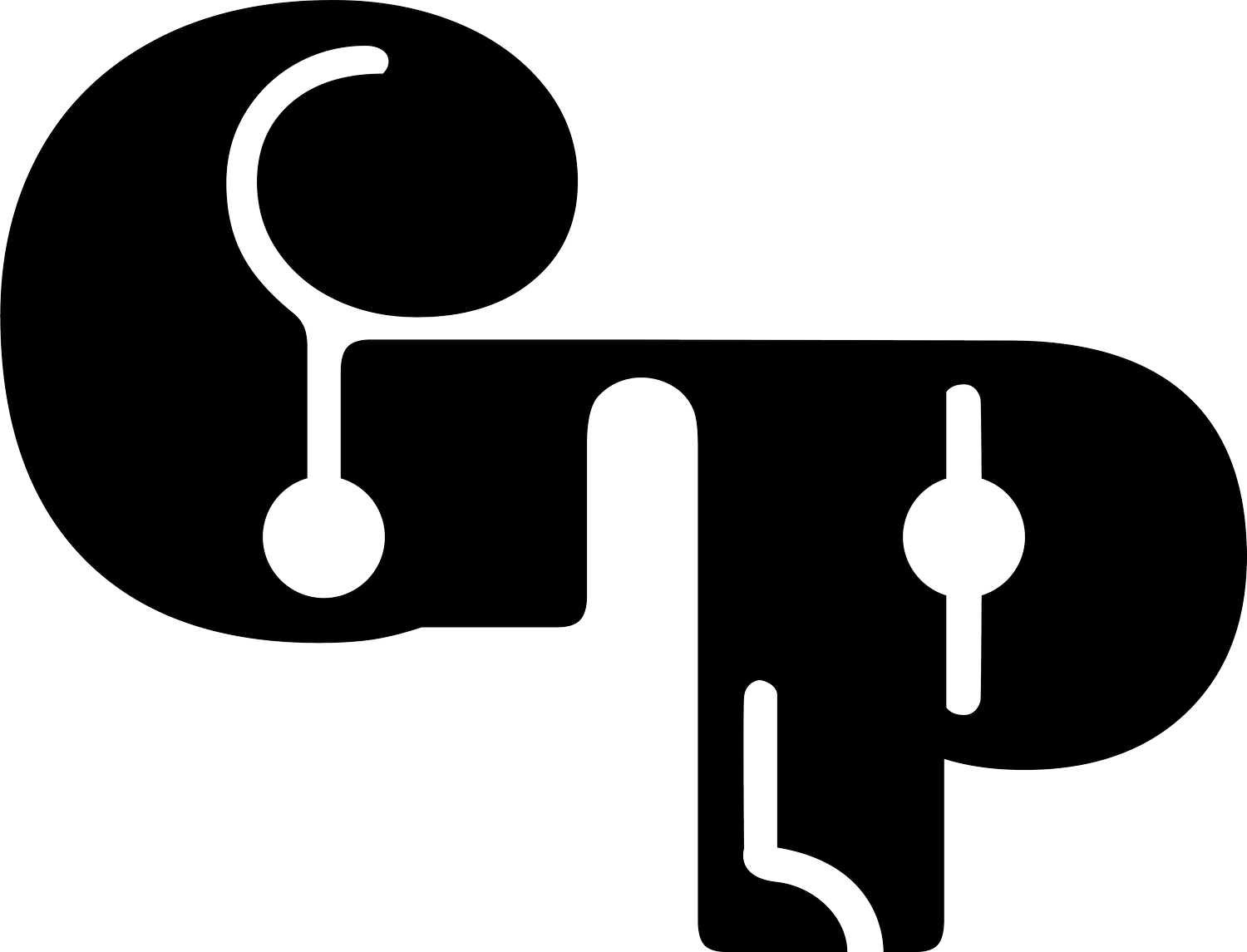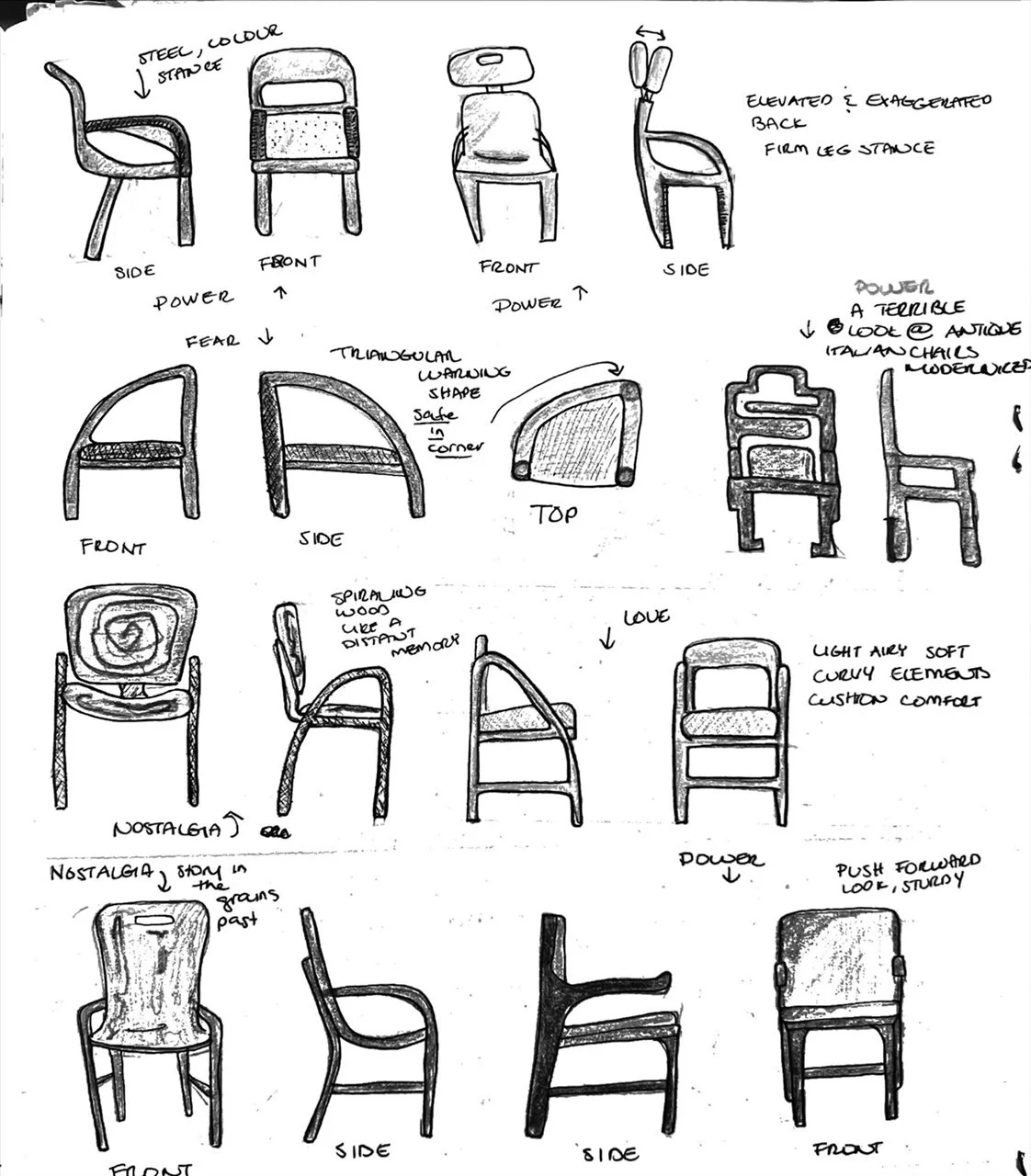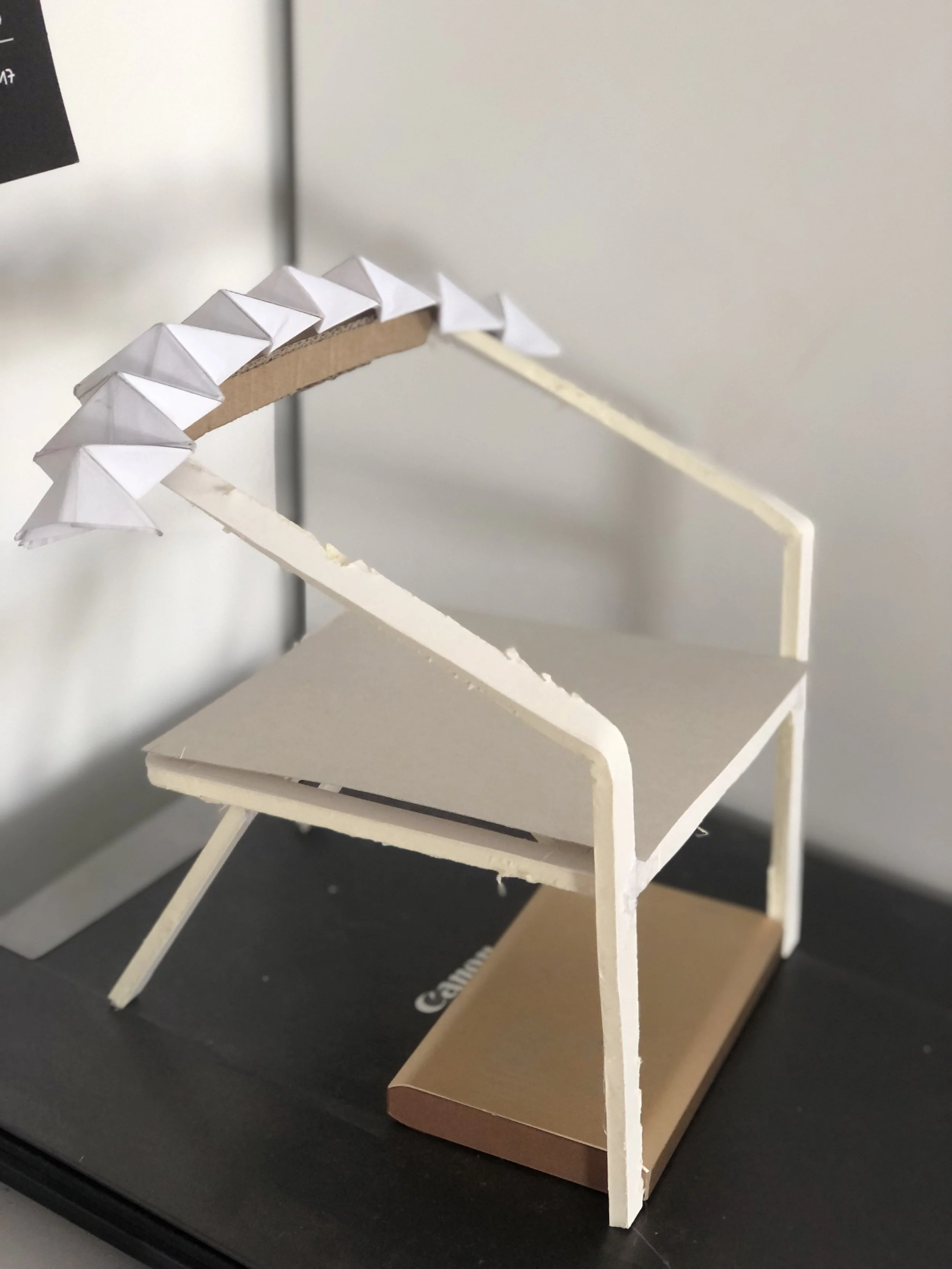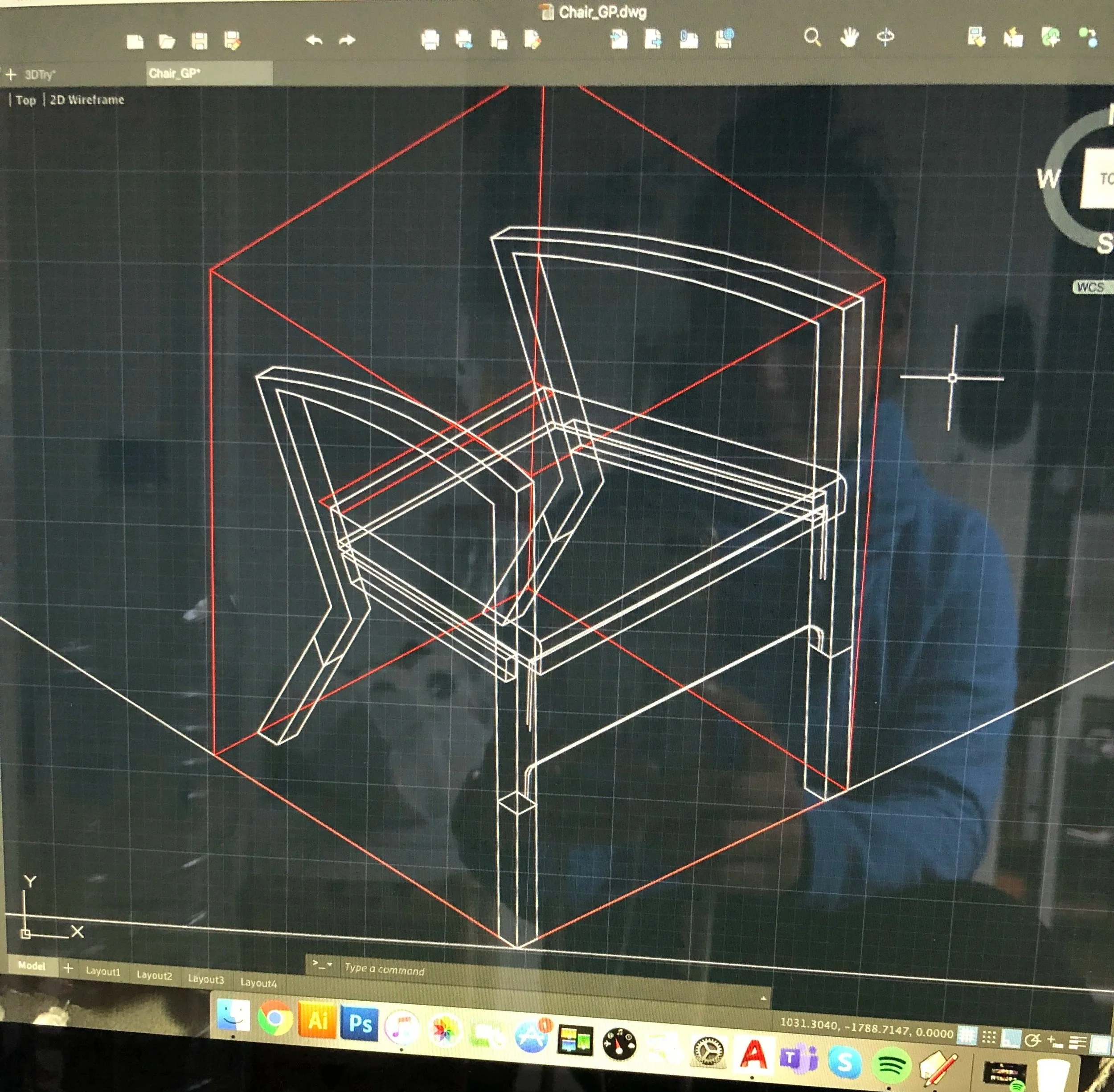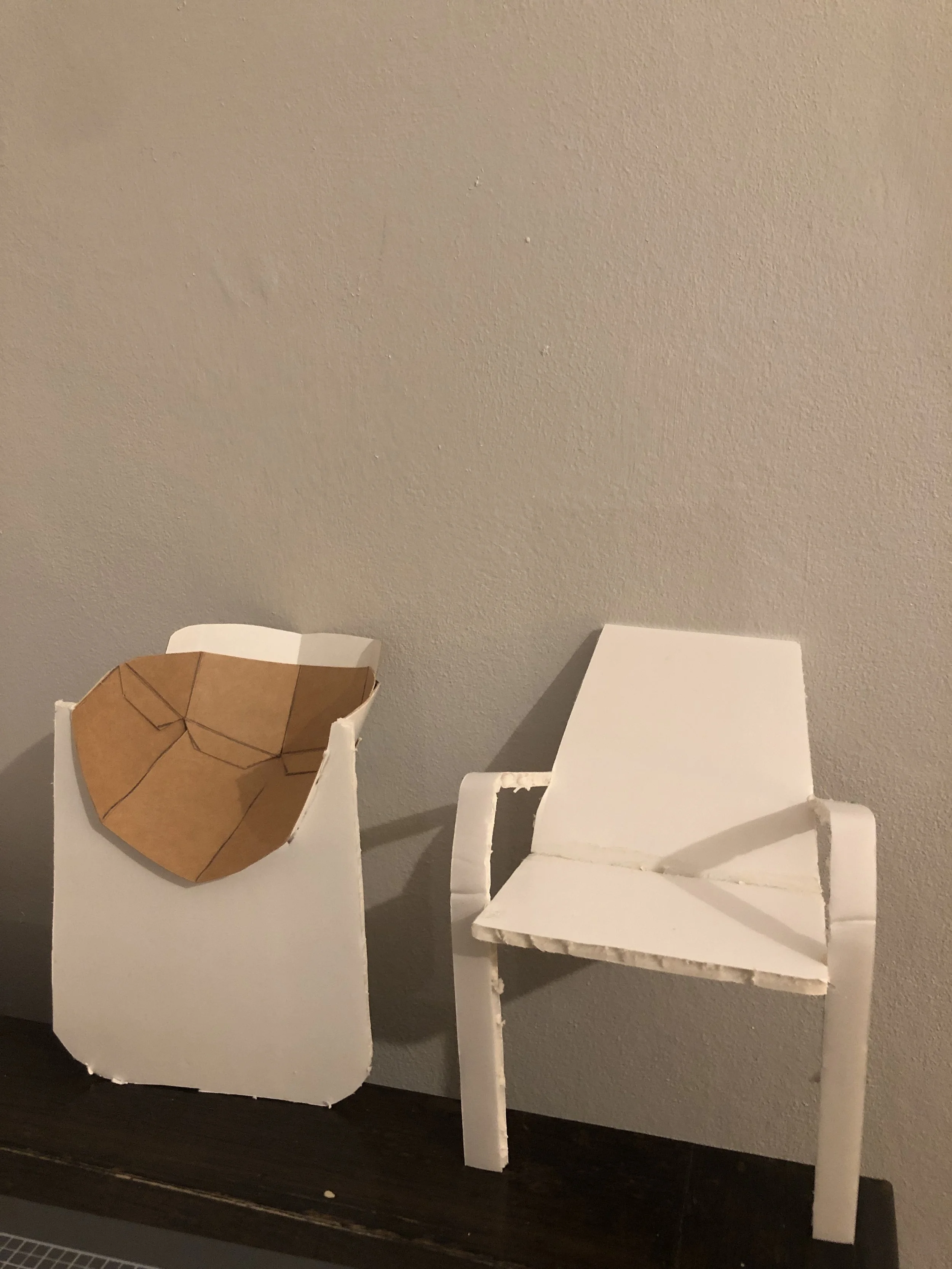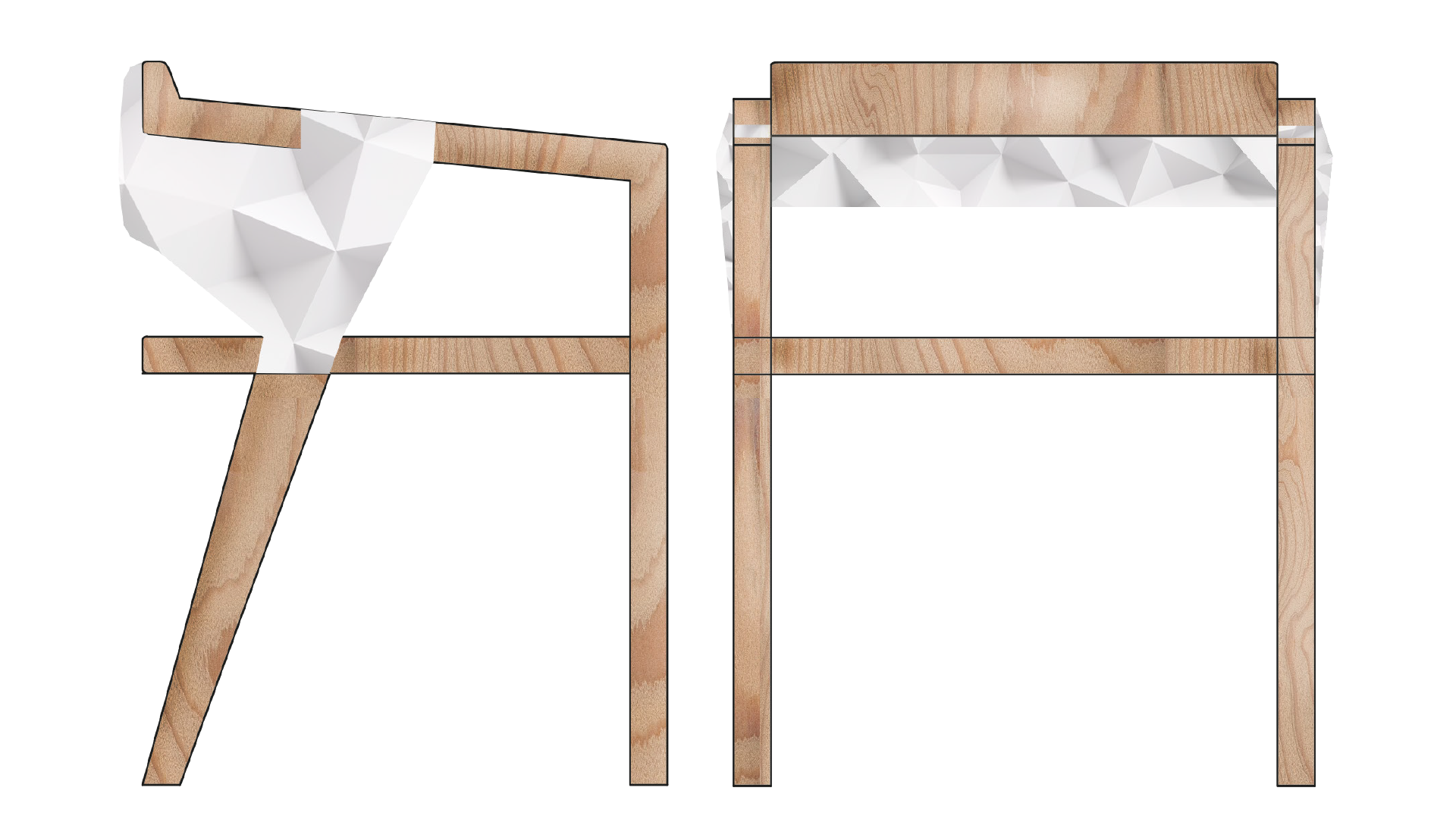Power over Fear Chair
Design Strategy
This chair is a physical representation of the journey from fear to empowerment. Its design uses contrast between materials to evoke this emotional transition. The steel frame, with its sharp angles, first creates a feeling of being on edge, embodying the initial confrontation with fear. This unyielding structure provides a sense of starkness and challenge. In contrast, the wood components offer a place of refuge. The warm, organic texture of the wood is shaped to cradle the user, representing the inner calm and resilience that can overcome fear. This blend of intimidating steel and comforting wood creates a powerful duality, mirroring the human experience.
The chair's ergonomics guide the user through this same journey. However, a subtle, tilt allows the user to effortlessly recline. This shift causes the backrest to gently lean back and the armrests to extend, transitioning the user from a state of unease to one of centered confidence and comfort. This design serves a wide audience, from young adults who see it as a stylish statement piece to an older demographic who value its stability and supportive form. It is a piece of furniture that is both a practical object and a deeper, abstract concept of emotional security.
Ideation
I wanted to design a chair that was more than just a piece of furniture—I wanted it to be an emotional experience. My initial research involved observing how people sit, noticing how mood and social interaction affect posture. This led me to the core concept: could I design a chair that intentionally evokes a feeling?
I began by sketching different emotions and translating them into form, considering how every curve, texture, and color could contribute to a specific mood. The result of this process was two final prototypes: one designed to express the gentle feeling of Love, and another created to capture the commanding essence of Power over Fear.
Prototype
I began my prototyping process by using a mix of traditional and digital methods to refine my chair design. Initially, I used cardboard, paper, and a foamboard for quick, tangible mock-ups. These physical models allowed me to rapidly test and iterate on the chair's basic shape, proportions, and ergonomics. The cardboard helped me understand the structural integrity of different forms, while paper and whiteboard sketches enabled me to quickly visualize and modify design ideas. Once the core concepts were solidified, I transitioned to digital prototyping using AutoCAD and SolidWorks. AutoCAD was crucial for creating precise 2D technical drawings of the chair's components, ensuring all measurements and angles were accurate. This blend of physical and digital prototyping was essential; the physical models provided immediate, hands-on feedback, and the digital tools ensured precision and helped me foresee and solve potential manufacturing challenges before committing to the final product.
Design Future
Modular/Interchangeable Components:
Steel Frame: Interchangeable in texture, form and color.
Customization and Patina:
The design could also be based on the idea that the chair changes over time with the user.
The wood could be left unfinished or with a natural oil to allow it to develop a unique patina over time. The "wear" on the wood would be a testament to the user's emotional journey and the many hours spent in the chair, a beautiful record of their resilience.
The steel could have a finish that changes slightly with touch, creating a more tactile and personal experience.
